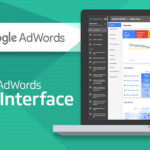To keep up with the latest trends of pay per click advertising, you should regularly review the best practices of this advertising medium. As the major pay per click networks evolve, it’s critically important to stay on top of every change that takes place.
After every 12 months, you should make it a habit to revisit your PPC advertising plan to make sure your campaigns are up-to-date, and are in line with the latest best practices.
Every time you conduct this review, you’ll more than likely find new techniques to implement in your PPC campaigns. You’ll also find opportunities to boost optimization scores and ads that can be improved upon.
Here are my 13 best practices on planning for the months ahead when it comes to keeping your PPC campaigns in tip-top shape.
1) Review Your Budget
Every few months you always want to review the distribution of your advertising budgets. When it comes to analyzing your budgets, keep these tips in mind:
- On a regular basis, review your monthly spend for every campaign you have.
- You can review this on a quarterly or semi-annually basis as long as the budget numbers are being reached.
- Determine whether or not poor performing campaigns should be eliminated to make room for new campaigns
- Can more keywords be added to the campaign to capture additional traffic?
- Can you increase your budget and invest more into a campaign if you’re seeing positive results?
2) Take A Look At New Features That Rolled Out By Google Ads & Microsoft Ads
There are new features constantly being rolled out by Google and Microsoft Ads, so be sure not to overlook them. 2 of these features include:
#1 Video extensions
Video extensions show up next to an PPC ad as a thumbnail and can be viewed as a full video when clicked upon. This is a feature that Google Ads and Microsoft Ads recently rolled out.
#2 Multimedia Ads
Multimedia ads is a new responsive ad format that was rolled out by Microsoft Ads. As the name states, it creates attention-grabbing ads by combining headlines, images, and descriptions to create an engaging experience with a viewer.
3) Consider Other Ad Networks
Even though Google, Microsoft, and Facebook Ads are major players in the pay per click game, don’t forget about other platforms that can deliver results for you also. Consider testing:
#1 LinkedIn
Although typically more expensive than Facebook Ads, LinkedIn can deliver exceptional results if you’re targeting professionals and business owners.
#2 Pinterest
You can participate in Pinterest Ads and promote your products, services, or consumer goods to a predominantly female-focused audience
#3 Snapchat
With Snapchat ads you can target a younger demographic with video ads and app installs.
4) Review Your Keyword Match Types
With Google’s discontinuation of the broad match modifier (BMM), phrase match targeting now has the ability to expand its reach. This means that you could potentially see more traffic from your phrase match keywords, and less traffic from your BMM keywords.
You will want to do the following when revisiting your keyword match types in your Google Ads campaigns:
- Determine if you will experience a shift in traffic volume because of the broad match modifier changes
- Learn more about Google phrase match, and stay up-to-date about it as it has evolved over the years
- Look for any irrelevant keywords that may appear from the match type changes the next time you review your search term reports
5) Consider Microsoft Ad’s Audience Network
The Audience Network in Microsoft Ads is AI-driven and can deliver more traffic to your current search campaigns. It analyzes billions of audience intent signals, and can render specific in-market lists that can reach searchers right when they are looking to buy.
An audience is simply a list of users who are grouped together by interests or behavior online. Because of these groups, you can mix and match these lists and target them via your sales funnel.
Some of the opportunities that you will want to test are:
- Detailed demographics: This includes parental status, education level, marital status, and household income
- LinkedIn targeting
- Remarketing
- Online behavior and searches that signal buyer intent
6) Prepare For Voice Search
If you’re not getting a lot of voice searches yet, soon you will. The popularity of voice search hasn’t grown into a phenomenon yet, but it’s best to stay on top of the marketplace when it comes to this trend.
You want to be ready to respond to information from voice searches, and block out the irrelevant searches. You’ll want to do this to see if there are any good keywords to add to your campaign, and it’s best to do this on a regular basis.
For instance, if you discover a few voice searches like “Thai restaurant near me”, you could create an entire campaign that targets people conducting this search.
With this information, you could create ads and landing pages that show information about your business. Information such as:
- Menu
- Parking
- Directions
- Reservations
- Hours
7) Update Your Performance Report
If you haven’t updated your pay per click performance report since a few years ago, it’s time for an update. You can add or replace key PPC metrics into your report.
On the “Overview” page in both Google Ads and Microsoft Ads, you’ll have access to a graph that shows you data on your current campaigns. You will want to consider new metrics to view on your performance reports if your old data isn’t adding to the profitability of your campaign.
But don’t add more data simply for the sake of it. Make sure your additions are actionable and will be used to make decisions on your account.
8) Apply Proper Bid Adjustments
Typically when search advertisers do bid adjustments, it’s done manually at the keyword level. But it’s possible to make bid adjustments beyond that. One of the options at your disposal is to have your bids adjusted by the “day of the week” or “hour of the day”.
If you want to maximize your results, you can even exclude bidding at certain days of the week, or times of the day. In Google Ads, you can go into “Ad Schedule” under “Account Settings”, and add your bid adjustments there.
9) Monitor The Performance Of Your Landing Pages
Your landing page is crucial to your PPC account’s performance and shouldn’t be overlooked. If you’re unwilling to invest in landing pages that convert, a lot of your PPC advertising will be done in vain.
While you may think that the performance of your ad determines the success of your campaign, it’s the landing page that is most responsible for converting your visitors. Your ad and keywords get people to your site, but it’s your landing page that converts them.
10) Write Good Ad Copy
If you’re not good at writing good ad copy, now is the time to learn how to do it well. You can’t just put up a mediocre ad and expect exceptional results from it. When taking a look at your ad, consider the following 2 things:
- The click-through rate from your ads
- Whether your ad has a high or low cost-per-conversion
A high click-through rate means your ads are well-written, and a low cost-per-conversion means your ad and landing page are working well in conjunction.
You can test your ad copy using responsive search ads – which will help you to test more easily.
11) Test Devices
Device performance is critical to the success of your PPC campaign, so this can’t be overlooked either. More than half of the traffic online today is mobile, and traffic from tablets is increasing also. When running your ads, ask yourself these questions:
- Is your website and landing pages mobile-friendly?
- What is the performance of your campaigns across computer vs. tablet vs. mobile devices?
- Do you need to make bid adjustments based on the results from each kind of device?
Sometimes you may have to exclude a device altogether for a campaign to be successful.
12) Use Experiments
An under-utilized feature of Google Ads is the “Experiments” feature. Experiments can help you try some optimizations within your account, without it affecting your results.
Experiments allows you to replicate a setup, modify something you want to test, and run it alongside your original.
You can control how much traffic is sent to the experiment by telling Google what percentage of search to send to it.
13) Reach Out For Help
If you’re running PPC campaigns but they seem to be leading nowhere, then get help. You can reach out and seek the advice of experts and agencies to get new ideas for growth.
Consider using the Paid Search Association to find industry events and make new connections. Along with that, you can purchase books, consult experts on social media, and read industry newsletters for tips and resources.
These 13 best practices for pay per click search campaigns can improve your campaign performance, and help bring more new revenue into your business. Make it a point to regularly analyze, optimize, and review these aspects of your paid search ads so that your campaigns are destined for success.





